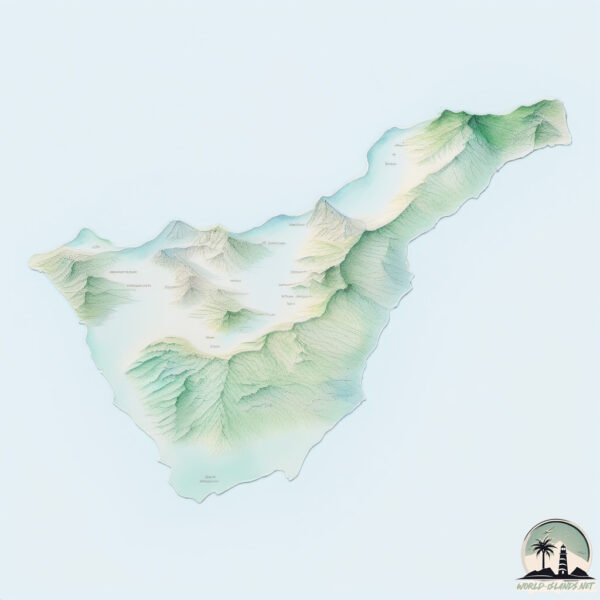Welcome to Tenerife , a Temperate island in the North Atlantic Ocean, part of the majestic Atlantic Ocean. This guide offers a comprehensive overview of what makes Tenerife unique – from its geography and climate to its population, infrastructure, and beyond. Dive into the details:
Geography and size of Tenerife
Size: 2047 km²Coastline: 302 kmOcean: Atlantic OceanSea: North Atlantic OceanContinent: Africa
Tenerife is a Very Large Island spanning 2047 km² with a coastline of 302 km.
Archipel: Canary Islands – A Spanish archipelago off the coast of northwestern Africa, known for their volcanic landscapes, unique ecosystems, and vibrant cultures.
Tectonic Plate: Africa – One of the world’s largest tectonic plates, covering the African continent and parts of the surrounding oceans, known for its stability with some active rift zones.
The geographic heart of the island is pinpointed at these coordinates:
Climate and weather of Tenerife
Climate Zone: TemperateClimate Details: Warm-Summer Mediterranean ClimateTemperature: Warm Summer
Climate Characteristics: Characterized by warm, dry summers and mild, wet winters, typical of coastal areas with abundant sunshine Rain is more common in the winter months, maintaining a moderate climate.
Topography and nature of Tenerife
Timezone: UTC±00:00Timezone places: Europe/LisbonMax. Elevation: 3718 m El Pico del TeideMean Elevation: 872 mVegetation: ShrublandTree Coverage: 19%
The mean elevation is 872 m. Dominating the island’s landscape, the majestic “El Pico del Teide” rises as the highest peak, soaring to impressive heights. The island is characterized by Mountains: High, steeply elevated landforms. Characterized by both a high maximum elevation (over 500 meters) and a high mean elevation, creating rugged, mountainous terrains on islands.
Dominating Vegetation: Shrubland
Vegetation: 13 vegetation zones – Exceptionally Diverse Island
Infrastructure and Travelling to Tenerife
Does the island have a public airport? yes .
Does the island have a major port? no .
The mean population of Tenerife is 518 per km². Tenerife is Densely Populated. The island belongs to Spain .
The name of the island resonates across different cultures and languages. Here is how it is known around the world: Arabic: تنريفي; German: Teneriffa; Spanish: Tenerife; French: Ténérife; Portuguese: Tenerife; Russian: Тенерифе; Chinese: 特内里费岛
Continuing your journey, Gomera is the next notable island, situated merely km away.
How To Spend 5 Days In TENERIFE Spain | The Perfect Itinerary
In this video, we're going to show you how to spend 5 days in Tenerife, the perfect itinerary for a travelers who wants to spot ...
How To Spend 5 Days In TENERIFE Spain | The Perfect Itinerary
In this video, we're going to show you how to spend 5 days in ...
In this video, we're going to show you how to spend 5 days in Tenerife, the perfect itinerary for a travelers who wants to spot ...
Tenerife: Top 10 Things To See and Do | 4K Travel Guide.
If you're looking for a dream island for your next vacation, Tenerife ...
If you're looking for a dream island for your next vacation, Tenerife is the answer! Located in the Canary Islands archipelago, ...
TENERIFE | We Found The Perfect Summer Escape!
(CANARY ISLANDS)
Car Rental in Canary Islands: ...
Spain is classified as Developed region: nonG7: Developed economies outside of the Group of Seven, characterized by high income and advanced economic structures. The level of income is High income: OECD.
News – Latest Updates and Headlines from Tenerife
Stay informed with the most recent news and important headlines from Tenerife. Here’s a roundup of the latest developments.
Loading...
Social Media Posts about Tenerife
Loading...
Please note: The data used here has been primarily extracted from satellite readings. Deviations from exact values may occur, particularly regarding the height of elevations and population density. Land area and coastline measurements refer to average values at mean high tide.

